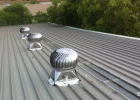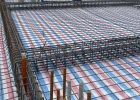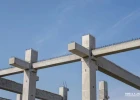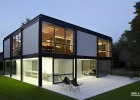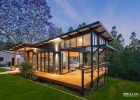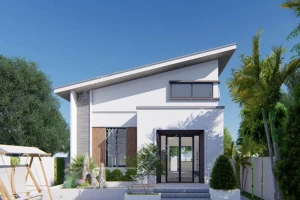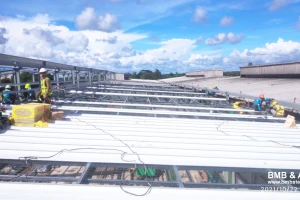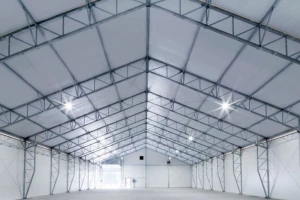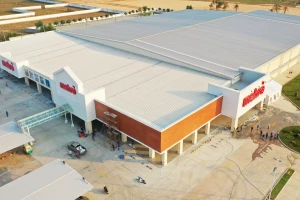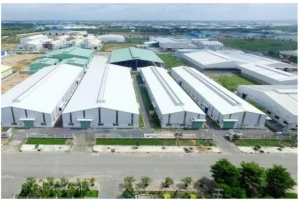Is It More Cost-Effective To Build a Steel Frame House? Is It Really Worth It?
- Overview of Pre-Engineered Steel Frame Building
- Is it more cost-effective to build a steel frame building?
- Comparison: Steel Frame vs. Reinforced Concrete
- Latest Steel Frame Construction Price Quotation
- What Factors Directly Affect the Cost of Steel Frame Construction?
- BMB Steel – Quality Steel Frame Construction at Optimal Costs
- Conclusion
Is it more cost-effective to build a steel frame building? This is a common question for anyone looking to balance cost, speed and durability in their construction plans. In this article, we’ll explore and break down the costs involved and highlight key factors that influence pricing.
Overview of Pre-Engineered Steel Frame Building
Pre-Engineered Steel Frame Buildings, also referred to as pre-engineered steel buildings (PEBs), became popular in industrial construction in the United States during the latter half of the 1970s. These buildings are constructed using steel components that are pre-designed, pre-fabricated, and manufactured at a factory according to specific design requirements. Once completed, the components are delivered to the construction site for quick and efficient assembly.
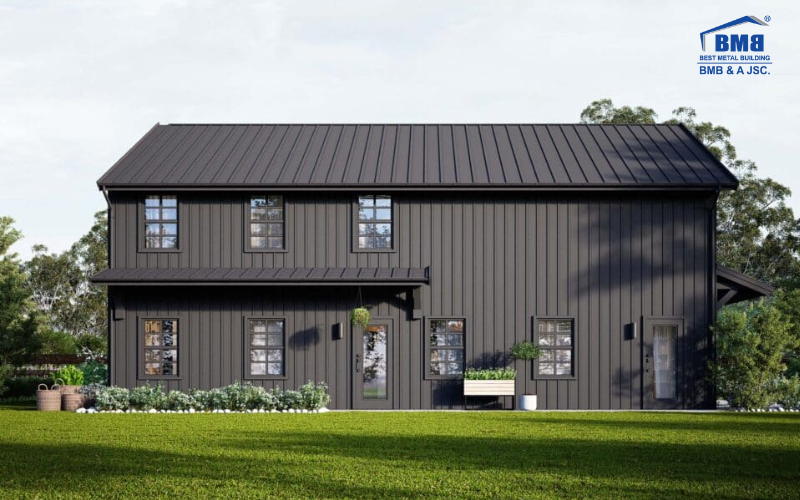
|
>Read more: What is the pre-engineered steel building? The optimal solution for your projects |
Is it more cost-effective to build a steel frame building?
The question “Is it more cost-effective to build a steel frame building?” is a concern for many when comparing construction methods. According to experts and practical case studies, building with steel can cut costs by 10% to 30% compared to traditional reinforced concrete methods. Additionally, construction is typically completed 2 to 4 months faster.
The primary factors contributing to cost reduction include:
- Reducing construction costs: A shorter construction timeline helps lower costs related to management, supervision, equipment rental, and labor, while also allowing the project to be put into operation sooner.
- Material savings: A solid understanding of structural systems enables the optimization of material quantities for the project.
- Lower risk and error-related costs: Components are manufactured in factories with better quality control and are quickly assembled on-site, minimizing labor expenses and technical issues.
However, costs still depend on various factors such as area, design, materials and construction location. Therefore, for an accurate estimate, investors should consult reliable construction companies.
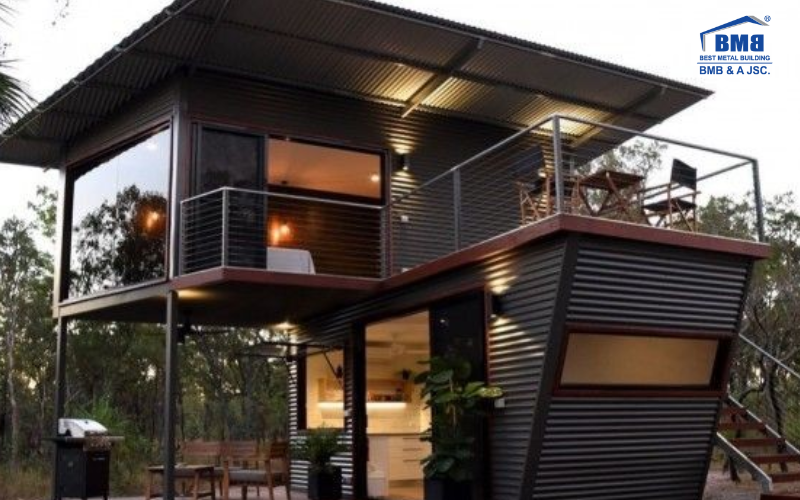
Comparison: Steel Frame vs. Reinforced Concrete
Let’s break down the differences in cost, time and durability between steel frame buildings and traditional concrete structures:
|
Criteria |
Steel Frame Building |
Concrete Building |
|
Construction Cost |
3,000,000 – 5,500,000 VND/m² |
4,500,000 – 7,000,000 VND/m² |
|
Construction Time |
2 – 4 months |
4 – 6 months |
|
Reusability |
High |
Low |
|
Fire Resistance |
Moderate (requires treatment) |
High |
|
Material Used |
Lightweight metals |
Reinforce concrete, Bricks, cement, wood |
|
Lifespan |
Up to 100 years |
30–100 years depending on quality |
In both Vietnam and international markets, Steel frame buildings offer lower initial costs and faster construction, particularly in terms of materials and labor costs. For example, in Vietnam, the average cost for building a steel frame building ranges from 3,000,000 VND to 5,500,000 VND per square meter. In comparison, reinforced concrete buildings cost between 4,500,000 VND and 7,000,000 VND per square meter.
Similarly, in markets like Australia, steel frame homes cost approximately AUD $1,300–$2,000 per square meter. While it might be more expensive than timber framing, it is typically more cost-effective than brick or block construction.
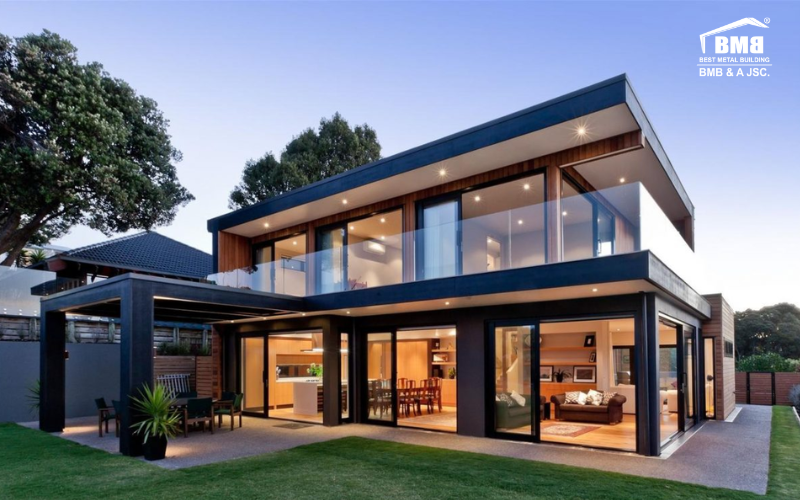
Latest Steel Frame Construction Price Quotation
The cost of constructing a steel frame building depends on several key factors. These include:
Total Area and Project Scale
Larger homes require more materials, labor and time to build. Simple designs, like rectangular layouts, are more cost-effective and faster to construct than custom, complex designs with multiple stories or curved walls.
Example: A basic 100m² steel frame building will be more cost-effective than a larger 250m² home, as the latter requires more materials and labor.
Material Types and Quality
Steel prices can vary based on whether the steel is locally sourced or imported. Imported steel tends to be pricier but offers better durability and resistance to corrosion. Insulation and finishing materials also influence the cost.
Example: Using imported steel and premium insulation will raise costs, while local materials and basic insulation can reduce the price.
Labor Costs by Region and Time
Labor costs depend on location and timing. Urban areas typically have higher labor rates, whereas rural or remote areas may have lower wages but higher transportation costs.
Example: Labor costs in a city like New York may be higher due to demand, while construction in a rural area could be more cost-effective but incur higher material transport costs.
Construction Equipment and Machinery
The need for specialized machinery, such as cranes and forklifts, adds to the overall cost. Remote locations or difficult terrain may require additional equipment.
Example: A large project requiring cranes to lift heavy steel beams will incur additional machinery rental costs.
Project Timeline
Longer timelines usually lead to higher labor and equipment rental costs. Prefabricated steel components can shorten construction time, reducing overall expenses.
Example: A 6-month construction timeline will likely cost more than a 4-month one due to extended labor and equipment use.
Additional Expenses
Minor unforeseen expenses, such as changes in the design or site conditions, may arise but typically don’t stray too far from the initial quote.
Example: If the foundation needs extra reinforcement, the cost might increase by 5-10%.
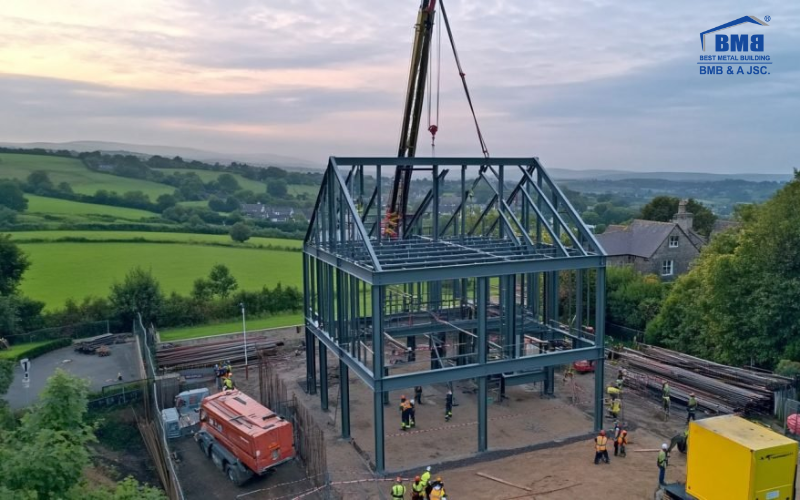
What Factors Directly Affect the Cost of Steel Frame Construction?
When answering the question "Is it more cost-effective to build a steel frame building?", it's important to consider the factors that directly influence the cost.
Construction Materials
Material costs can fluctuate depending on supply and market availability. Imported steel tends to be more expensive but may offer better corrosion resistance or higher durability ratings. Local steel is more affordable but may require additional treatment to ensure longevity.
- Structural steel: Can account for 30-40% of the total cost.
- Insulation and finishing materials: Typically make up 20-25% of the budget.
- Roof and wall systems: Add an extra 10-15%, depending on the choice of materials.
Size and Design of the Building
The cost for architectural and engineering design services can range from 5% to 10% of the total budget. Homes with curves, multiple floors or large projections require more design work and structural reinforcement.
- Straight-line designs: Faster and more cost-effective to fabricate.
- Custom components: Take more time in design, material usage and fabrication.
Construction Location
The terrain and location of the land are crucial when calculating costs. If the project is in an area with difficult transportation conditions or an inconvenient site, transportation and labor costs will increase significantly.
- Urban projects: Benefit from local material supplies but are subject to higher labor costs and permits.
- Remote locations: Have lower labor costs but higher logistics expenses.
Construction costs are generally lower if the project is built in favorable conditions.
Permitting Fees
Permit fees can vary significantly depending on the region. In major metropolitan areas, permit fees for steel frame construction can represent 2%–5% of the total cost, whereas rural areas may have lower permit fees. Some local governments may require additional inspections or more complex documentation, further increasing the overall cost. Failure to address or delay these steps can halt construction, indirectly raising your budget.
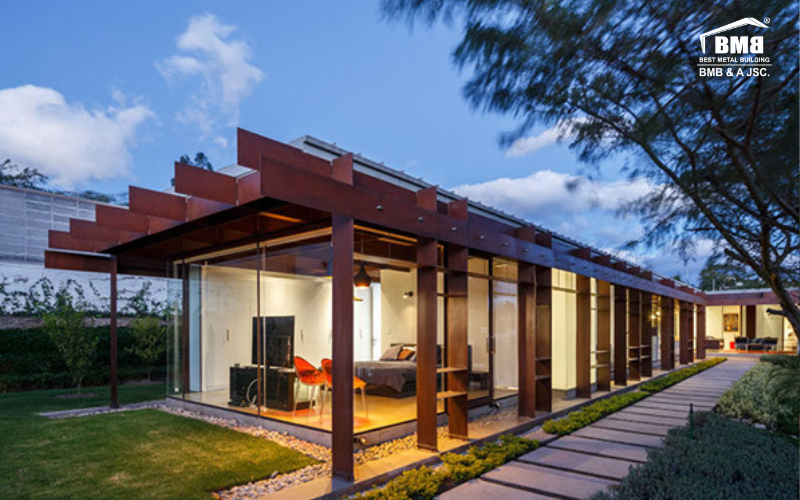
Permit fees and requirements vary by region and can affect total costs
BMB Steel – Quality Steel Frame Construction at Optimal Costs
With over 20 years of experience, BMB Steel is proud to lead the field in pre-engineered steel frame building construction. Our expert team and advanced equipment ensure high-quality builds at competitive prices.
Why choose BMB Steel?
- Cutting-edge technology: We use modern fabrication and assembly techniques for precision and efficiency.
- Expert consultation: Transparent pricing, in-depth advice and responsive support from skilled engineers.
- On-time delivery: Streamlined processes to complete your project on schedule.
- Long-term warranty: Clear policies that guarantee peace of mind after completion.
- Wide service coverage: We operate in multiple regions, including difficult-to-access areas.
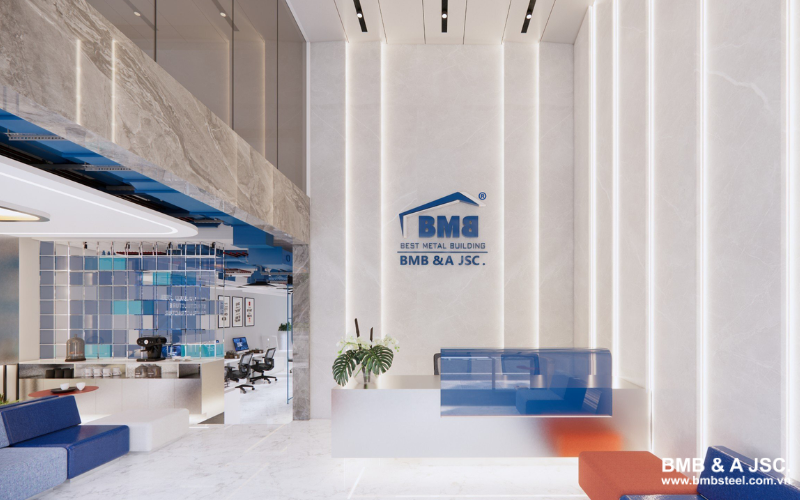
Conclusion
Above is the answer to the question “ Is it more cost-effective to build a steel frame building?". Although the initial cost and environmental impact of the manufacturing process are concerns, the long-term benefits of durability, pest resistance and low maintenance make steel frames a worthy choice for homeowners. For quality assurance and the best pricing, contact BMB Steel or expert advice and a detailed quote.









